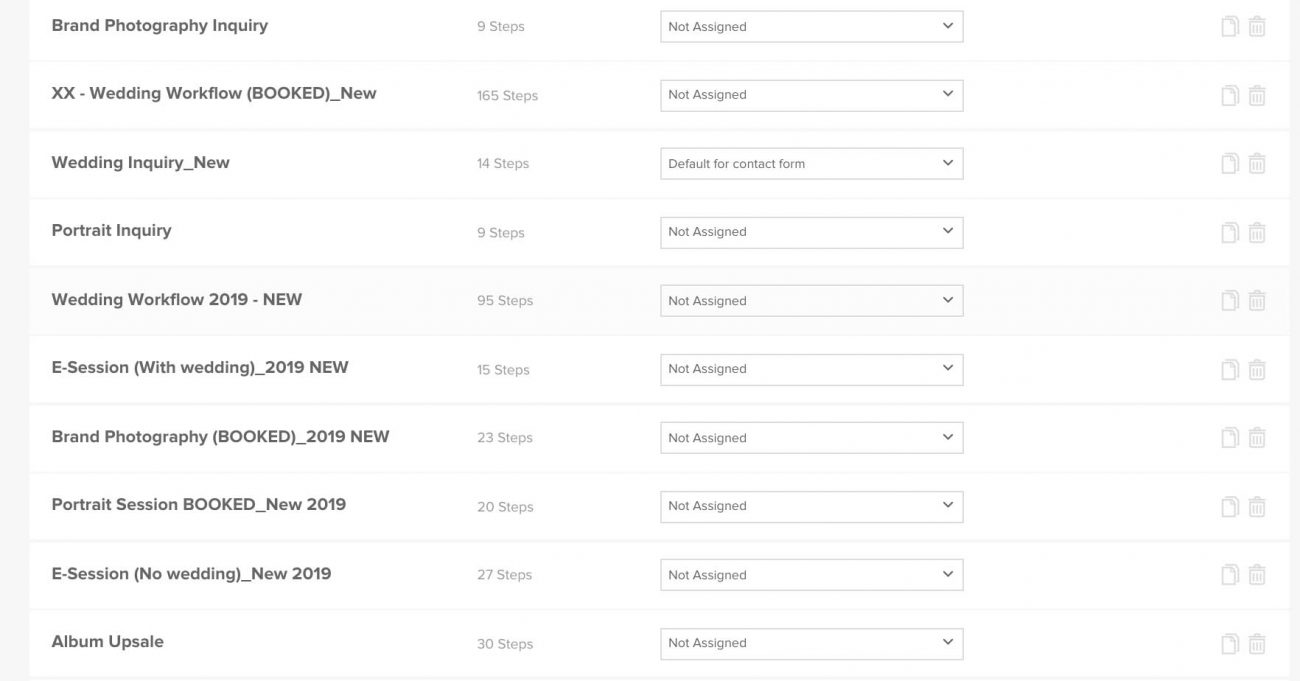HoneyBook Pro Laura Neff explains how you can spend this year maximizing your profit in just four steps. It’s all about using your data, setting realistic goals and working more efficiently.

We’re in the season of running to buy our favorite pens and sticky notes, trying out what seems like 53 different planners to find the perfect fit, and sitting down to set goals that just might make this year our year.
But, before you go dreaming big, I think it’s just as important to look back with intention at the past year, where we spent our time, and where it actually paid off.
I’m Laura, and I run two—almost three—businesses. With Laura Lee Photography, I shoot the most awesome people in love and on adventures. With Laura Lee Creative, I serve creative entrepreneurs through helping them streamline their business and develop systems so they can go after those big dreams without burning out in the process. And, now, with my newly launching Find Your Freedom Co., I’ll be facilitating a community focused on entrepreneurs living their actual best life, and never feeling burdened by their passions.
As you can imagine, that translates to kiiind of a crap ton of goals, metrics, processes, etc.
The only way I can keep it all straight is with HoneyBook, and today I’m gonna talk you through how I use HoneyBook not just as an online payment software (which is awesome) but a tool to help me analyze patterns, set goals, and make those goals happen.

Pro Tip: Laura is a HoneyBook Pro. She helps overwhelmed business owners get off the hot mess express and get their business organized with workflows and systems. Work with Laura 1:1 personalized support toward maximizing your profit this year!
Step 1: Analyzing the data
If you’re not already using the Reports function in HoneyBook, you might be missing out on some key data.
Using Reports, you can track things that will inform your vision and planning for the coming year.
Track your profit and loss reports.
If you use the Quickbooks integration with HoneyBook, you can easily measure how much you’re actually making, and start to brainstorm where you can cut costs—or maybe even what investments made your income totally skyrocket last year.
Analyze referral sources.
Not only can you analyze the distribution of where people are coming to you from, but you can also break it down in terms of value of lead source and conversion rate of each lead source. That means HoneyBook can help you figure out if your average project price is highest with clients who find you on Pinterest or those who are referred by a mutual friend.
These details you can uncover with the Reports feature is super helpful information as you’re trying to decide not only what your goals are, but where you need to focus your efforts to achieve those goals.
As a creative entrepreneur, it’s easy to listen to podcasts and watch Instagram stories that make you feel like you need to be doing ALL. THE. THINGS. When, in all reality, the most progress is made from focusing on the right things and crushing the heck out of them. Reports is a great way to get started with that analysis.
Pro Tip: If you don’t have a “where did you find me” field on your Contact Form, it’s one of the most helpful pieces of data you can ask for!
Step 2: Set Goals
Okay, if I’m being totally honest, I do step 2 ALL THE TIME. I even have what some people might call a “crazy notebook” where I literally dump so many crazy ideas you might think there’s something wrong with my brain.

There’s nothing wrong with it, it’s just firing on all cylinders most of the time and really hard to turn off. Can anyone relate?
The type of goal setting I’m talking about here is a little more intentional. It’s about figuring out where we’ll focus and when we’ll focus on it.
After I analyze the data, I can really sit down and get intentional. I take my big goals like more profit, launch a new brand, focus on growing my affiliate team to serve more clients – and turn those into a little bit more of an actionable plan.
Want more profit?
You can’t just wish for it. Where, realistically, is that increased profit going to come from? If it’s coming from the photography side of my business, that means I need to beef up my associate photographer program so that I don’t have to clone myself to reach that goal (Which I’m convinced should be possible at this point, don’t you think?). Just because we have more associates doesn’t mean they’ll automatically book all the weddings we need.
With that in mind, how will we market?
Based on our data analysis, in the past couple years we’ve had around 50 inquiries come from Facebook, but we’ve had about 2 come from Instagram. That tells me that my photography marketing efforts may be better spent on Facebook.
Launching a new brand, project, or offer?
This takes a lot of time, friends. More than you’d think. So, first and foremost the goal would be to offload some day-to-day tasks and drop some unimportant or less urgent projects to simply free up time and space for creativity.
The second goal in this process is to set a launch date. Remember, done is always better than perfect. You can always refine something when it’s out into the world – and it’s usually better that way.
Even if you have no idea how you’re gonna launch this thing, or you’ve been dreaming it up for months, do your best to clear time to prioritize the project and set a date.
Growing your team?
This goal is also a matter of clearing time, too. Bringing on any new team members requires a lot from you if you’re doing it right. I also might spend time really setting the vision for what I want my team to look like, and how I want us to function in the long run to make sure I’m hiring that totally right person.
Step 3: Spend Time on What Matters
This is too important of a step to expect that you’ll get it from the sections above. Analyzing the data and setting intentional goals is totally pointless if you don’t use that information to design your days.
Your day-to-day tasks should be spent on things that will move the needle – a.k.a. make visible progress on the goals you’ve just defined.
The tool I use to make this happen is HoneyBook’s Automations function.

I have approximately 9 automations in HoneyBook’s client workflow automation software for my photography business and 5 for my education business.

My most intense one? It’s my wedding photography client automation.
It’s basically a work of art (if I do say so myself).
It starts from the moment the wedding is booked, and runs all the way through to the couple’s first wedding anniversary. YEP. It’s 163 steps.
It might sound crazy, but that one workflow is an example of how I serve my clients super stinking well, stay top of mind with them during their entire engagement and wedding journey (and in their marriage!), and the process doesn’t actually need me at all.
Now, we do have every step set to “approve before sending.” So, nothing is 100% automated. This allows us to delete steps if a couple books with a shorter engagement, if they don’t need a step, etc. BUT, it also allows us to just click, tweak if needed, then send, rather than using actual brain space to communicate almost every other week with our couples.
PLUS, HoneyBook is so dang easy and intuitive, I trained my assistant and studio manager, Sydney on it in like 3 seconds. Now it’s been months since I’ve had to go into HoneyBook and do anything.
Amazing, right?
Pro Tip: If you have any repeat workflows, put them in a HoneyBook workflow, ASAP. This is actually what I help business owners with at Laura Lee Creative, so come on over if you feel overwhelmed!
Step 4: Maximizing our efforts
But, how do I scale my business?
I feel like this is a question I hear from countless business owners. First, let’s make sure we know what that super buzzy word means.
SCALING simply means that your business is growing without your time commitment increasing proportionally. So, in other words, a business that can scale is one that can spend more time up front and little to no time later, and drastically increase their profit.
The big conversation around scaling is usually “passive income.” BUT, before you dive into that beast, ask yourself, “Have I scaled my current business model as much as possible?”
You can scale by developing processes and systems.
As I mentioned before, workflows are your best friend when you’re trying to serve more clients or make room for something different in your business. Workflows allow you to serve everyone the same, developing brand consistency and a crazy-good client experience.
Pro Tip: Think about going to Starbucks. No matter where you go in the entire world, you Starbucks drink will ALWAYS taste the same because they have systems down to a science. If they WEREN’T consistent, they wouldn’t have brand loyalty and they’d lose a heck of a lot of repeat customers and referrals.
You can scale your lead generation.
Scaling how many inquiries you get doesn’t mean growing your audience (necessarily), it just means doubling down on those referral channels that are actually working.
If we go back to my Facebook vs. Instagram referral example, an hour of my time spent on Facebook will get me a much larger return than an hour spent on Instagram. That’s scaling. Same amount of time spent for better results.
You can scale by increasing your conversion rate.
So, now you have more inquiries coming in. AWESOME!! But, how many are actually converting?
Getting “ghosted” time and again is one of the fastest ways to question your life and career choices.
Wanna know my secret weapon? A strategic Contact Form crafted in HoneyBook.
More specifically? I always ask for the client’s phone number on my Contact Form.
Ready to uplevel your lead capturing?
HoneyBook’s customizable contact forms are key in Laura’s ability to get more leads, and ACTUALLY book them. Want in? We thought so. START YOUR FREE TRIAL.
Start free trial(I KNOW, WHEN WAS I BORN, THE 50’S?!)
But, you guys, it’s truly magic. Any time I get an inquiry, I call them. They (usually the bride) get to hear my voice and connect with me personally. I super simply introduce myself, and ask them a couple questions about their engagement. Then, over the phone, we set up a consultation! I hardly ever get “ghosted.”
This is huge. My marketing efforts will never go to waste – ensuring that my time is well spent, but also maximized.
If I’m being totally honest, 2020 already feels like a big, scary year for me. But, through my process of intentional planning–using HoneyBook as a tool to analyze and implement–I know I won’t be heading into the year blind.
I can’t tell you enough how important it is to go through the core pieces of this process for your own business: Analyze past results, set intentional goals for your business, and streamline + maximize your systems so you can scale.
If you take a crack at these three things this January, I just cannot wait to see what a breakthrough year you’ll have!
This post was updated in August 2021 when the HoneyBook Workflow tool was renamed to Automations. The HoneyBook Automations tool maintains the same functionality with the ability to automate communications, tasks and more. For more information about the Automations update, check our August 2021 Release Notes.



